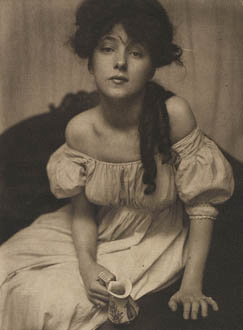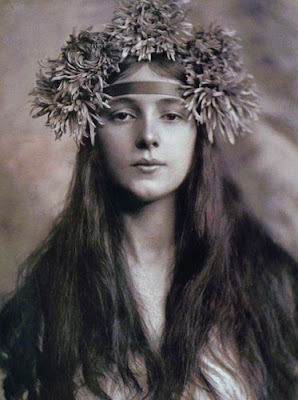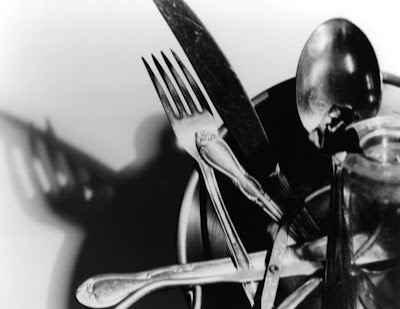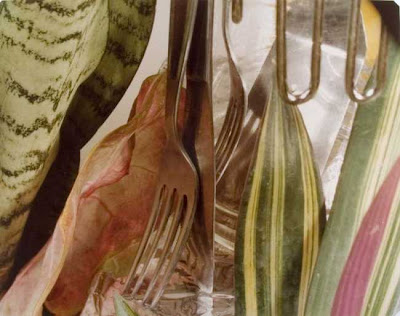Thursday, June 30, 2011
Tuesday, June 28, 2011
Final Assignment In-progress pics
So my idea behind this was to capture modern everyday scenes and make them appear old. I wanted to focus on urban environments, so I am going to continue trying to find areas like this that are suitable for the photographs I am looking for, with old-looking text or structure.

Blob Prompt Week 6
2. The opposite of my final project would be to use small figurines or just photograph people instead of landscapes and scenery.
3. A consistent theme in my project is the idea of old-fashioned scenery and urban areas and landscapes.
6. If I had no limit, I would go above a volcano on a helicopter or out west to photograph the desert or just go somewhere different from Michigan's landscapes.
7. In simplist form, my project would consist of me photographing pictures of landscapes and maybe making a collage of it.
11. A hundred years ago, my project would be exactly what I was going for. There wouldn't be any modern aspects to it, which is what I want to capture. If it were in the future, it would be very technologically based and there would be a lot of technology in the picture.
12. Taking away spots from my picture or a tree doesn't change the overall feel or theme of the picture, instead it can help to make it look a little more cleaned up.
16. If this were a narrative, it would be about someone struggling to make it in an urbanizing town.
18. If I made a collage about my project, I think it would turnout pretty nicely. I think it would give it a new meaning and could be used to enhance the project.
19. Dostoevsky would like my work because we try to capture similar scenarios and scenes.
20. Halsman would probably not be as interested in this project because he was known for his famous portrait work.
3. A consistent theme in my project is the idea of old-fashioned scenery and urban areas and landscapes.
6. If I had no limit, I would go above a volcano on a helicopter or out west to photograph the desert or just go somewhere different from Michigan's landscapes.
7. In simplist form, my project would consist of me photographing pictures of landscapes and maybe making a collage of it.
11. A hundred years ago, my project would be exactly what I was going for. There wouldn't be any modern aspects to it, which is what I want to capture. If it were in the future, it would be very technologically based and there would be a lot of technology in the picture.
12. Taking away spots from my picture or a tree doesn't change the overall feel or theme of the picture, instead it can help to make it look a little more cleaned up.
16. If this were a narrative, it would be about someone struggling to make it in an urbanizing town.
18. If I made a collage about my project, I think it would turnout pretty nicely. I think it would give it a new meaning and could be used to enhance the project.
19. Dostoevsky would like my work because we try to capture similar scenarios and scenes.
20. Halsman would probably not be as interested in this project because he was known for his famous portrait work.
Monday, June 27, 2011
Thursday, June 23, 2011
Tuesday, June 21, 2011
Historical Photographer: Gertrude Kasebier
Gertrude Kasebier was one of the most influential American photographers of the early 20th century. She was born in 1852 in Iowa, but in 1864 when her father suddenly died, her family moved to New York and she eventually moved to Pennsylvania where she attended college. She married on her twenty second birthday in 1874 and soon after has three children. She was very unhappy in her marriage, but divorce was not accepted then, so Kasebier and her husband decided to live separate lives while remaining married. Her husband supported her when she was 37 to attend art school even though she wasn't thrilled about art.
In the late 1890s she began photographing elements of the Western U.S., focusing on people's faces and emotions. In July 1899 after having 5 of her pictures published, she shot to fame. In the same year her picture titled "The Manger" sold for $100, the most for any picture at the time. In 1901 she had an entire chapter devoted to her work in the book Photography As A Fine Art.
Her husband died in 1910, giving her the independence she had always wanted. She began coming into the spotlight, not for her work, but because former friends and colleages were criticizing her. Alfred Stiegletz, who had published her first five photographs, began attacking her work, possibly because of jealousy or because he did not believe in making money and getting rich off of photography, which he saw as art.
She opened a door for many women in photography, inspiring them to follow their dreams and pursue photography like she had done. She continued her portrait business throughout the 1910s and most of the 1920s. in 1929 she gave up photography and emptied the contents of her studio. She later died in 1934.






In the late 1890s she began photographing elements of the Western U.S., focusing on people's faces and emotions. In July 1899 after having 5 of her pictures published, she shot to fame. In the same year her picture titled "The Manger" sold for $100, the most for any picture at the time. In 1901 she had an entire chapter devoted to her work in the book Photography As A Fine Art.
Her husband died in 1910, giving her the independence she had always wanted. She began coming into the spotlight, not for her work, but because former friends and colleages were criticizing her. Alfred Stiegletz, who had published her first five photographs, began attacking her work, possibly because of jealousy or because he did not believe in making money and getting rich off of photography, which he saw as art.
She opened a door for many women in photography, inspiring them to follow their dreams and pursue photography like she had done. She continued her portrait business throughout the 1910s and most of the 1920s. in 1929 she gave up photography and emptied the contents of her studio. She later died in 1934.



Monday, June 20, 2011
Contemporary Photographer: Jan Groover
Jan Groover is American photographer born in 1943 in New Jersey. After receiving a BFA and MA, she began her art in specializing in color techniques. She is best known for her use of household utensils in her pictures. She creates still lifes and uses everyday materials to photograph her work and document everyday things that people usually don't notice.






Sunday, June 19, 2011
Blog Prompts Week 5 (22-24)
22. A lot of thought and time went into these pictures. He had to make sure everything was spot on in relation to what his vision was. I enjoyed that he was so passionate about his work and put a lot of thought and hard work into his pieces. It is inspirational because it gives me reassurance that I can do something as time-consuming as that.
23. I construct my identity by the way I dress and look. I try to look presentable or stylish even though I am not sure what my style is exactly. I do spend a little time on my hair and make-up like most girls do, but it is way more low key in the summer. My personal culture is constructed by the way we talk, the things we do, and the ways we interact. Different ways of social media like cellphones or Facebook shape the way we interact in person and how we do things. Real life is doing mundane things that you do everyday like brushing your teeth, taking out trash or running errands. Constructed reality is getting dressed up for a wedding or going on a first awkward date, something that you don't do everyday. A narrative tableux would be getting ready for a flight, then having it canceled so you have to go to another flight across the building, then meeting someone and starting a conversation, etc. In miniture format, you could use small figurines or toys to act out the humans or other objects in the scene.
24. For the final project, I am not exactly sure yet what I want to do because I am still coming up with ideas, but I would like it to be a series of either people I am close to or of weird landscapes or scenery, but still undecided.
23. I construct my identity by the way I dress and look. I try to look presentable or stylish even though I am not sure what my style is exactly. I do spend a little time on my hair and make-up like most girls do, but it is way more low key in the summer. My personal culture is constructed by the way we talk, the things we do, and the ways we interact. Different ways of social media like cellphones or Facebook shape the way we interact in person and how we do things. Real life is doing mundane things that you do everyday like brushing your teeth, taking out trash or running errands. Constructed reality is getting dressed up for a wedding or going on a first awkward date, something that you don't do everyday. A narrative tableux would be getting ready for a flight, then having it canceled so you have to go to another flight across the building, then meeting someone and starting a conversation, etc. In miniture format, you could use small figurines or toys to act out the humans or other objects in the scene.
24. For the final project, I am not exactly sure yet what I want to do because I am still coming up with ideas, but I would like it to be a series of either people I am close to or of weird landscapes or scenery, but still undecided.
Wednesday, June 15, 2011
Recreation 4
I did a recreation of the scene in The Shining where Jack Nicholson is peering out of the door. Because of color differences, I chose to make mine in black and white, while still trying to keep the essence of creepiness and unknowing. I used photoshop to make the under-eyes darker and to make some of her other features darker. The use of a girl instead of a guy was merely because of limitations and time constraints, not anything about the picture.
Semi-Contemporary Photographer: Wallace Berman
Wallace Berman was an American photographer born in 1926 in New York. He moved at the age of 4 to Los Angeles with his family. He attended two art schools, Jespon Art School and Chouinard Art. He became part of beat communities in 1957, experimenting with drugs and various types of sexuality. He had shows in galleries and later owned a gallery.
His style was to use many different collages in his work. He would construct collages from pictures of people in his everyday life and included much of his life and thoughts into his work. He was a huge influence in the Semina Culture, reflected from the Beats and his style, work, and aesthetic.
 He tragically died on the eve of his 50th birthday after being struck by a drunk driver.
He tragically died on the eve of his 50th birthday after being struck by a drunk driver.




His style was to use many different collages in his work. He would construct collages from pictures of people in his everyday life and included much of his life and thoughts into his work. He was a huge influence in the Semina Culture, reflected from the Beats and his style, work, and aesthetic.
Historical Photographer: Timothy H. O'Sullivan
Timothy O'Sullivan is an American photographer from New York City born in 1840. He is best known for his work on the American Civil war, the Western U.S., and other aspects of war. After serving a short time on the army, he was honorably discharged and continued following Majors and Generals and capturing the moments in combat.
O'Sullivan began his early career as a teenager working as an apprentice. After being commissioned in the army at 21, he was released, and went on to publish a series of 44 photographs of the first Civil War photographs collection. In July of 1843 he created his most famous picture, The Harvest of Death, which depicted dead soldiers on the battlegrounds. He continued taking photographs of American war, traveling the country following famous names such as Ulysses S. Grant and Robert E. Lee. Fun fact: this all happened before he turned 30. In 1870, he went to Panama to survey the canal, but returned shortly to the U.S. He spent his later years in Washington D.C. as the official photographer for the U.S. treasury and the U.S. Geological Survey. He died in Staten Island at the age of 72.
O'Sullivan began his early career as a teenager working as an apprentice. After being commissioned in the army at 21, he was released, and went on to publish a series of 44 photographs of the first Civil War photographs collection. In July of 1843 he created his most famous picture, The Harvest of Death, which depicted dead soldiers on the battlegrounds. He continued taking photographs of American war, traveling the country following famous names such as Ulysses S. Grant and Robert E. Lee. Fun fact: this all happened before he turned 30. In 1870, he went to Panama to survey the canal, but returned shortly to the U.S. He spent his later years in Washington D.C. as the official photographer for the U.S. treasury and the U.S. Geological Survey. He died in Staten Island at the age of 72.
Subscribe to:
Comments (Atom)






























 Recreaion of still life from Jan Groover.
Recreaion of still life from Jan Groover.
